In August 1971, west Belfast was in chaos.
"It was a mass evacuation of women and children," remembers Carmel Quinn – then eight-year-old Carmel Laverty from Ballymurphy. "There were milk lorries bringing people on the back of them, everybody was just told to get down to the community centre and somebody would be there to pick you up and bring you to the train station.
“I remember our John, he was only 20, going over to the woman across the street and taking her washing off the line and saying, ‘you have to get out of here with your wee kids’.”
He brought the neighbours and Carmel and her sister, Rita (14), to the evacuation point; their last memory of their brother is him waving goodbye as they left.
“John told me everything would be okay, I was going on a wee holiday, and everything would be back to normal when I got back,” says Carmel.
“I can still see him standing there waving, you couldn’t have missed him, he was so tall,” says Rita. “We just waved until he was out of sight.”
Every day we were put in this big army truck with a soldier at each end and we were brought up and dropped off and they came back a couple of hours later and picked us up in time for our dinner. It was like a holiday camp
Early on the morning of August 9th, the controversial policy of internment without trial was introduced in the North, sparking widespread rioting and leading to dramatic increase in both the level of violence and the number of deaths.
Fourteen would die in the North on that day alone; in Ballymurphy five were shot and fatally wounded by British soldiers, including the parish priest, Fr Hugh Mullan – who had gone to help an injured man – and a mother of eight, Joan Connolly.
“I remember in the early hours of the morning the doors getting put in [by the British army] and then the barricades going up,” says Anne McEvoy, then 14.
Her father piled his wife and children into the family's van, and drove them to the refugee camp run by the Irish Army at Gormanston, Co Meath.
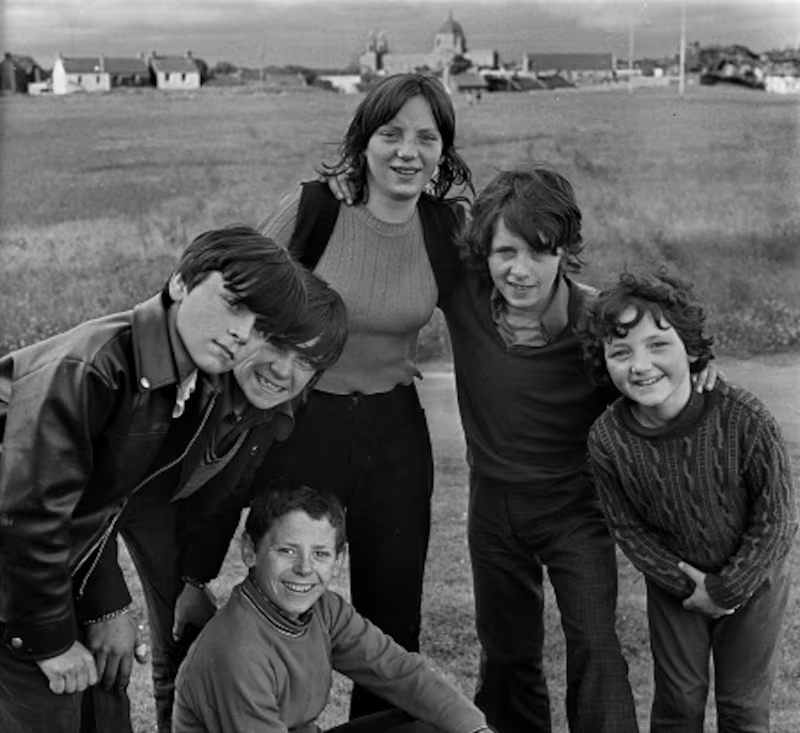
This was the commonest destination for those leaving Belfast; refugees from Derry and western counties – fewer in number – tended to make for Finner camp in Co Donegal.
Often they were then sent on to other camps such as Kilworth in Co Cork, Coolmoney in Co Wicklow, or anywhere accommodation could be found.
Refugees had been fleeing South to escape the Troubles since 1969, with successive waves following each summer until 1972; they were from an "overwhelmingly nationalist" background, says Brian Hanley, lecturer in history at Trinity College, Dublin.
“In 1969 there were reports of a few Protestant families, but in general they’re nationalists who either feared the loyalist violence or who were coming south for shelter when things got really bad in 1971 and 1972.”
In the days immediately following the introduction of internment in August 1971, more than 5,000 people – mainly women and children – flooded into the camps.
The Red Cross were so good to us. They used to give out Farley's rusks to the babies, and I used to let on we had a baby to get a box, I loved them
Ray Ryan, a reporter for the Corkman, was at Kilworth when the first busloads of refugees arrived in 1969. "I distinctly remember the children and the mothers ... I remember how shocked they looked."
The Murphy family from Ardoyne in north Belfast was among the earliest refugees. In August 1969 rioting began in Derry and spread to Belfast, where seven people were killed or fatally wounded; streets regarded as Catholic were burned by loyalist mobs, including Hooker Street, off the Crumlin Road.
"I saw my mummy crying, I knew something was wrong," says Eileen Murphy, then 10 years old. "They burned the house we were to get in Hooker Street."
With nowhere to go, they ended up in a school in Andersonstown in west Belfast. "The people of Andytown brought in food and cooked it for us, and we sat in classrooms on mattresses, and then one night we were woken up out of our sleep and put on this bus, and the next thing I remember is wakening up in Gormanston."
“The soldiers were taking all the children off the bus and bringing them into the canteen and they had tea ready for us, but I couldn’t go in because I was that exhausted. I had seven and I was expecting another one, and I just wanted to go to bed,” says her mother, Alice, now 84.
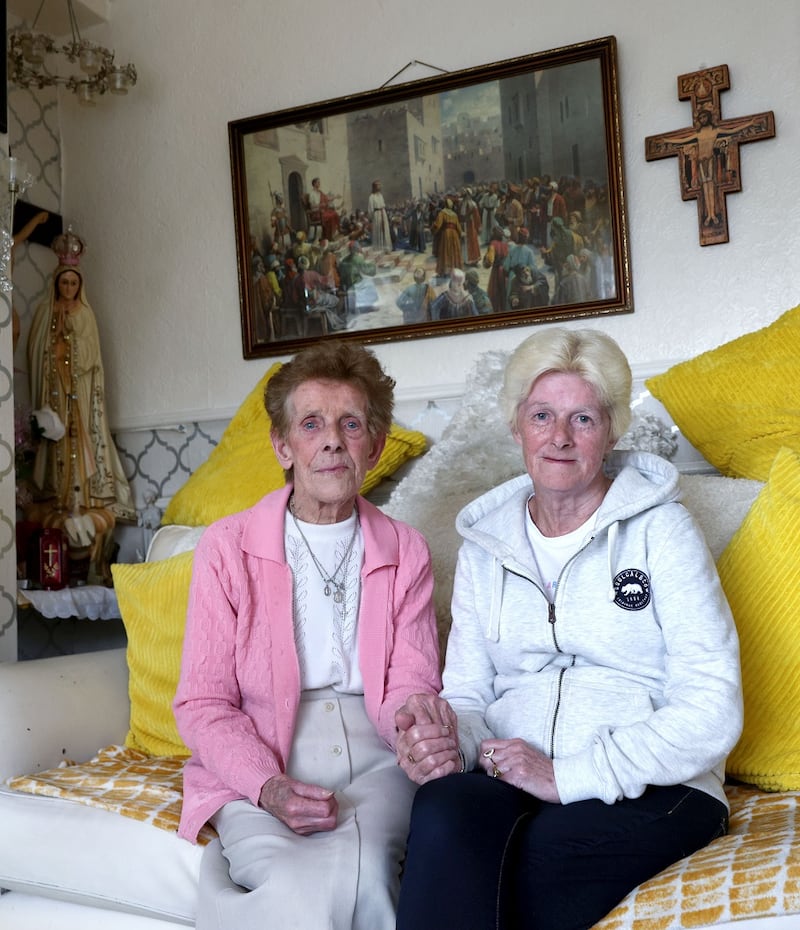
“I was worrying because Johnny [my husband] was here [in Belfast] but when I woke up the next morning it was great. I knew the children were safe.”
Eileen has a different memory. “When we were getting off the bus that day, the Irish soldiers were carrying all the younger ones off and I remember one of them saying to me, ‘Did you ever hear of Butlins?’
“It’d be like saying to someone now, did you hear of Disneyland. I said, ‘aye’, and he said, ‘well, we’re taking you there tomorrow’. So that was me, it was heaven.
“And they did. Every day we were put in this big army truck with a soldier at each end and we were brought up and dropped off and they came back a couple of hours later and picked us up in time for our dinner. It was like a holiday camp.”
By mid-August 1971 this newspaper reported comments by the then Taoiseach, Jack Lynch, that the reception of refugees had "almost reached saturation point"; 601 refugees were in the Garda training college at Templemore, Co Tipperary, Dublin Corporation housed 1,250 in hospitals, schools and convents, and about 100 refugees from Derry were sent to the Ursuline Convent in Sligo.
“Two thousand men, women and children literally stepped out of the trains and walked into the camp,” said one army officer at Gormanston.
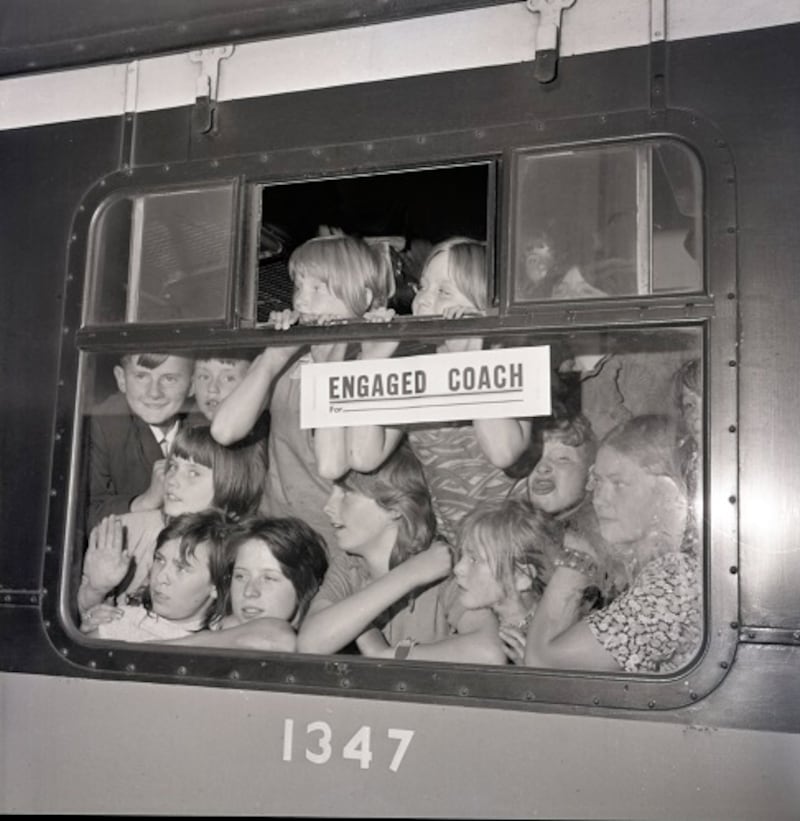
Army cooks worked almost non-stop to feed the new arrivals, and a milk lorry arrived every hour from Drogheda with milk for the children.
“The Red Cross were so good to us,” says Carmel. “They used to give out Farley’s rusks to the babies, and I used to let on we had a baby to get a box, I loved them.”
The charity looked after medical aid and transport and provided clothes and toiletries for the refugees; community organisations, trade unions, churches and groups of all kinds, as well as individuals, organised collections and donations for the refugees.
“A group of people from Belfast were housed in Mullingar due to a connection between a local woman and a friend in Andersonstown,” says Hanley, “and PJ Carrolls donated 10,000 cigarettes to the refugees.”
As well as Butlins – convenient to Gormanston – for some lucky children there were trips to the zoo and to the cinema, and concerts for the adults.
A refugee for the first time in 1970, 10-year-old Harry Gargan from west Belfast remembers spending their first night "in an aircraft hanger, on a mattress on the ground".
They were then moved to Cork; “the huts were like you see in a second World War movie, with the heater in the middle of the floor and the wee beds all round it.
“It was my first time on a train ... it was exciting, like an adventure to me.”
Facilities differed; reporting from Kilworth in 1970, the Cork-based Evening Echo described “35 wooden and concrete huts” with about 20 bunk beds in each.
“There is no privacy whatever in the huts and no running water. Two wash rooms, which have toilets, and washing facilities service the whole camp.”
An appeal had been made at Mass in Fermoy for "cots, prams, toys and clothing for the refugees, and all day these items had been pouring into the camp".
Yet there was also curiosity about the newcomers: “All day long cars had been pulling up on the main Cork-Dublin road to peer through the wiring at the refugees from the North.
“Nobody took any notice of them and indeed they had not much to look at except crowds of children playing around the huts. The accents might be different but they looked like any other children,” the Echo observed.
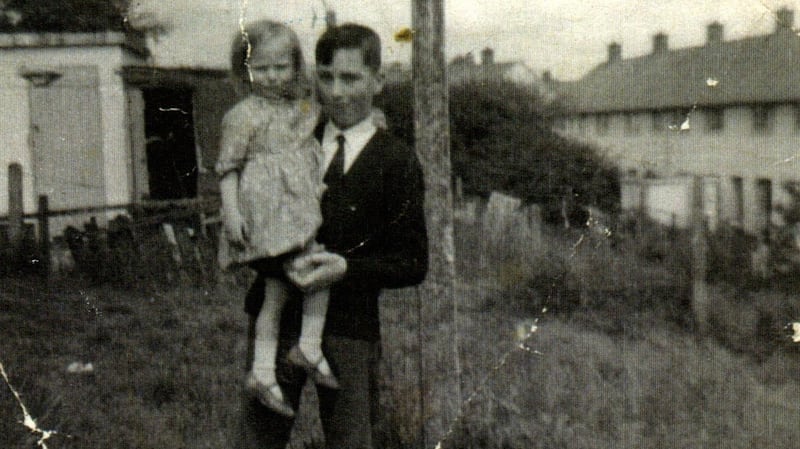
Photographs of Northern refugees in Salthill, Galway - published in the Connacht Tribune in 1972 - show happy, smiling children, their arms thrown round one another as if posing for a holiday snap. “Do you want us to show you how we throw stones at the Brits, mister?” is the exuberant offer captioning one image.
Yet beside them are other, starker pictures; of quiet, sombre children and mothers who hold their babies in their arms, unable to hide the worry on their faces.
The women are afraid, the reporter writes: of the UDA, of the British Army, of “them”, of being treated as second-class citizens if they moved South, of “becoming neurotics because they all take nerve tablets and sleeping pills now.”
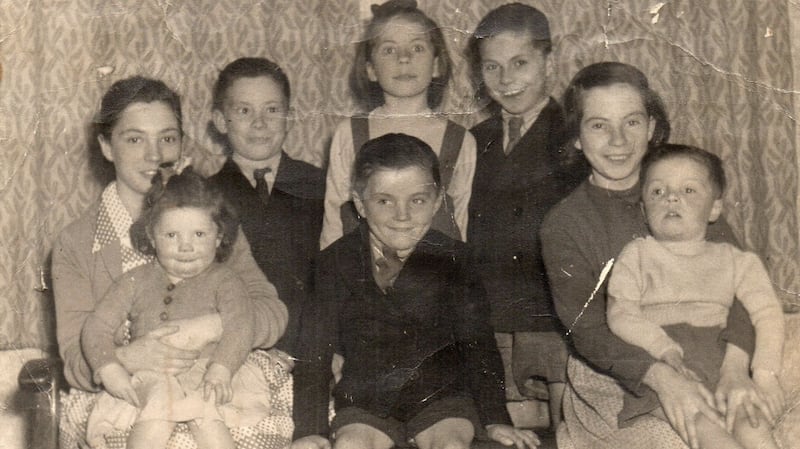
About 200 women and children were sent to Glenstal Abbey in Co Limerick. Father Simon Sleeman – then a novice – remembers the sudden phone call telling them to expect three bus-loads of refugees.
“It was mainly mothers and babies, and that’s the last thing we had any experience of.”
Nappies hung mainly “in between landings ... you had to be very careful where you walked, and there were clothes and children’s toys, things that were never seen here before or since”.
"But we had a great Father Peter Gilfeddar, he was from the North, and he was a sports master in the school, and he was wonderful with children, luckily, and he had them running around rings, chasing bottles of Coke, anything. He was like the Pied Piper of Hamlin."
Yet there were also reminders of what the children had left. “The first thing they went to get was stones, to fire at things,” remembers Fr Simon. “Fr Peter was having them running round the castle, I remember a car backfiring, and of course all the children were absolutely terrified, it sounded like a bomb or something like that, they froze.”
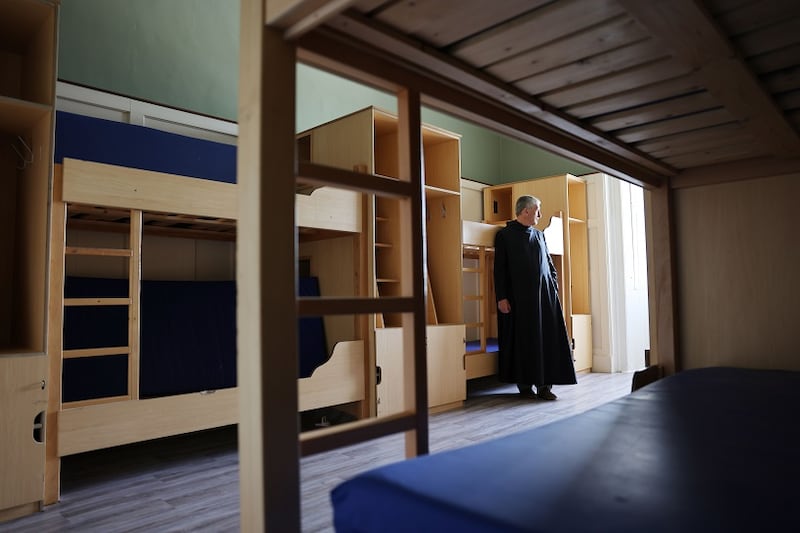
At the Abbey, he says, “I think they were relieved to be in a place that was safe. They had arrived in the dead of night, for them it must have been quite an experience coming to this dark castle.
“Our aim was to make them as happy and content and at home as possible and give them the best time they could get to contrast with where they’d come from. That was what we set out to do, and I think we did, they had a great time.”
‘Class judgment’
Not all were as lucky. Anne McEvoy was desperate to get back home. “My mummy was interviewed on the radio and she said our priest had been shot.
“I remember we had to go to a phone box to phone home, and Daddy relaying all this to us. Two people had been killed just at our corner, where our shop was.
“I was 14, I wanted to be in my own area.” Sent to a camp in Cork, she was horrified to see “people there with furniture, who had made homes in the huts. I thought, we’re never going to get out of here”.
Most of the refugees stayed for a short time before returning home, though some would later return as part of summer holiday schemes for Northern children. Yet others who left to escape the Troubles did so permanently, generally moving either to border towns or to Dublin.
In 1971, there were just over 26,000 people born in Northern Ireland living in the Republic; by 1981 this had risen to 40,557; some settled as far south as Shannon, Co Clare.
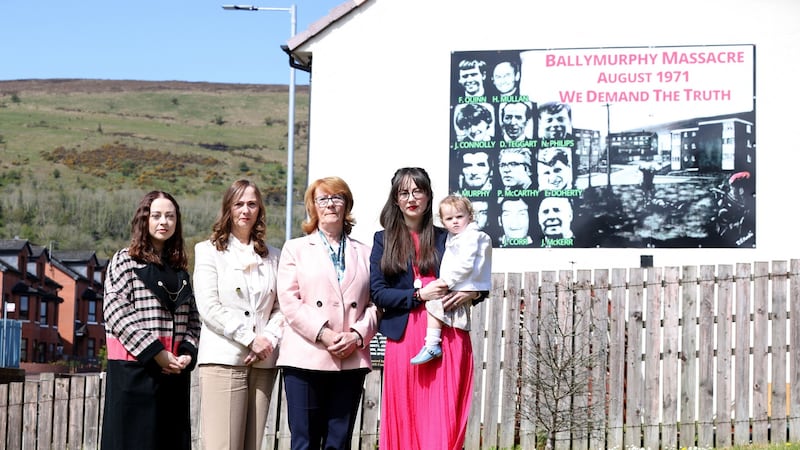
“There was a distinct group of people from the North who had all come in the early 70s and all lived in basically one estate. They were a distinctive community in a pretty small place,” says Hanley
Attitudes towards the Northern refugees also began to change. “The general view from 1969-71 is that these people are being attacked and murdered and we just have to help them.”
By 1972 “it’s becoming a little bit more problematic. People begin to be worried about the Troubles spreading South and the refugees [are] being seen kind of as the symbols of this trouble spreading south.”
There was also an element of “class judgment” towards the refugees and their behaviour, notes Hanley; the majority of them were children, and from urban, working-class backgrounds, in contrast to the mainly middle-class civil servants, gardaí and relief workers they encountered. “I do think that coloured perceptions.
“It’s also interesting in terms of some of the attitudes towards contemporary refugees in that people are sympathetic and want to do something and as long as the refugees display gratitude people think that’s ok, but as soon as they ask for something, as soon as they say something’s not right...
“When the women from Belfast in 1972 complain these places aren’t up to standard, that there aren’t enough facilities for the kids, people immediately react defensively, and say, ‘what do you expect, you’re a refugee’.
The young ones need to be taught what happened. This is what happens when politics doesn't work. This is the consequences
“You get this idea by 1972 which seems bizarre, that really they’re coming for a free holiday,” he says. “July 1972 was when you see people really saying that and July 1972 was the worst month of the worst year of the Troubles, and it’s absolutely appalling, the idea that all these women and children are coming south just because they want to go to the seaside.
“To me it reflects a growing fear of destabilisation, of overspill of the violence coming south, and people from the North become associated with that.”
Fifty years on, many of the former refugees have positive memories.
“We were taken to school in Drogheda, and every time we used to go down to Dublin we would pass it and I would say, ‘that’s where I used to go to school’,” says Eileen. “My kids even started saying it, it was, ‘here we go again’.
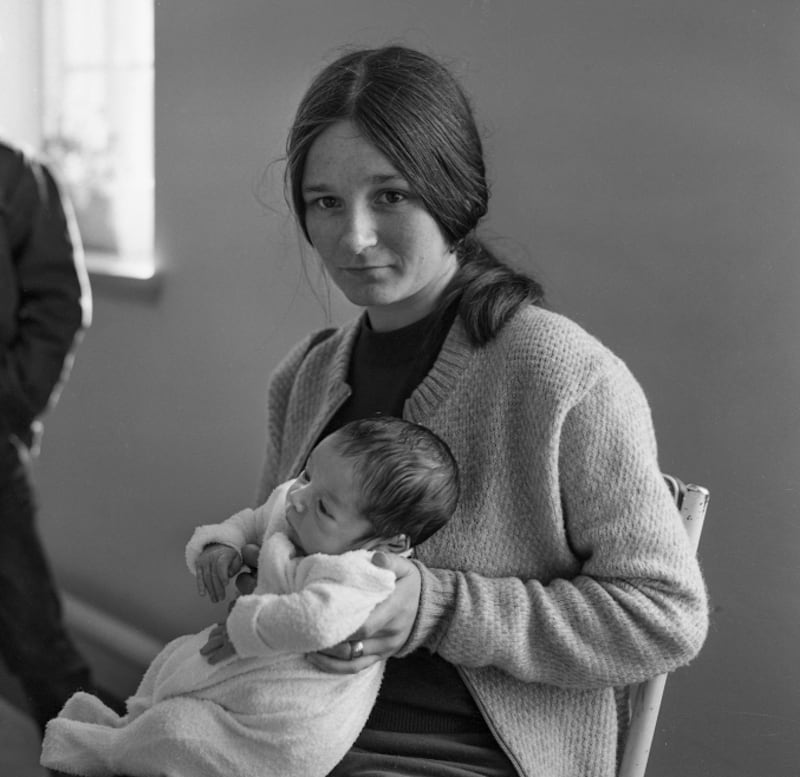
“It’s still there – it isn’t used any more – but we went down a couple of years ago and we got photos taken outside the building.”
They are also grateful to those who helped them. “I always say the Irish Army were very, very good to us,” says Carmel. “As a child you felt safe, you felt protected.”
“I knew the children were safe, and they were awful good, they couldn’t have done any more for us,” says Alice.
“They didn’t have to take us in, they could have said, ‘no, we can’t cope with all those people’. We really appreciate it. We’ll never forget it.
“That’s why I feel sorry for all those people who have to leave their countries, who get killed in dinghies or in the water [trying to cross the Mediterranean]. Britain, America, everywhere should take them in. What if it happened in their country?”
My children say, 'you were refugees, seriously?' We would have it that that was something that happened in a different country, not in Ireland
“It does throw up questions about how society views people fleeing these problems,” says Hanley. “You’ve got echoes of that in direct provision and all the other issues people talk about today.”
In Glenstal, that gratitude runs both ways. Fr Simon’s memory is that the refugees brought a sense of life to the abbey. “They enjoyed themselves, they were up for the craic, and we were too in a certain sense we had a good number of younger monks.” Did the refugees enrich their lives? “Yes, absolutely.”
This week, the Laverty sisters will remember their brother John on the 50th anniversary of his murder. John – who had waved them off only days before – had been killed, one of 11 victims of what would become known as the Ballymurphy massacre.
In the camp Rita and their older sister, Susie, were interviewed by the Daily Mirror. It published a photograph of the sisters’ sad, drawn faces, but Carmel was cut out of the photograph. “I was smiling. I was too young to be told, so I was smiling, because I didn’t know.”
“We haven’t had a normal life in two years,” Susie told the newspaper. “Trouble, trouble, all the time. But we’ll have to go back to Ballymurphy. We’ll have to go for my brother’s funeral. Anyway, it’s home, isn’t it?”
Today, Rita still lives within walking distance of the family’s former home in Ballymurphy. “My children say, ‘you were refugees, seriously?’ We would have it that that was something that happened in a different country, not in Ireland.
“To me it’s forgotten history, it’s like something that was buried because we were refugees in our own country.”
“The young ones need to be taught what happened,” says Carmel. “This is what happens when politics doesn’t work. This is the consequences.”




















